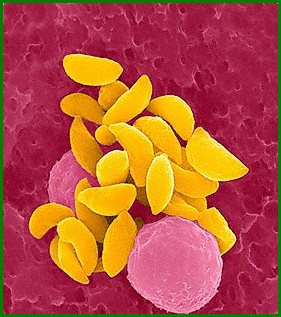Stay pregnant in the polluted atmosphere increases the risk of delayed fetal development and birth of children with low birth weight Stay even slightly polluted atmosphere during pregnancy significantly increases the risk of delayed fetal development and birth of children with low birth weight, as evidenced by the extensive European study, published this week in the journal The Lancet Respiratory Medicine. The main author of the scientific work is Dr.
Stay even slightly polluted atmosphere during pregnancy significantly increases the risk of delayed fetal development and birth of children with low birth weight, as evidenced by the extensive European study, published this week in the journal The Lancet Respiratory Medicine. The main author of the scientific work is Dr.
Marie Pedersen (Marie Pedersen), an employee of the Research Center Environmental Epidemiology (CREAL) in Barcelona.
The ratio between staying in a polluted environment during pregnancy and low birth weight is observed even at pollution levels below the air quality standards adopted by the European Union, the study said.
Scientists estimate that an increase for every 5 micrograms of the content of fine particles (PM-2, 5) in a cubic meter of air (5mkg / m) during pregnancy, the risk of having a baby with low birth weight increases by 18%. This increase (5mkg / m) usually occurs in areas of heavy vehicular traffic and the location of industrial enterprises.
The study authors noted that the risk increases even when pollution levels below the average annual air quality standards adopted by the European Union and part of 25mkg / m.
Our research suggests that many cases of children born with low birth weight in Europe could be avoided by reducing the content in the urban atmosphere of fine particles, - says Dr. Marie Pedersen.
Average levels of PM-2, 5 in particular studied the atmosphere of the village ranged from 10mkg / m? to almost 30mkg / m.
Dr. Manolis Kogevinas (Manolis Kogevinas), one of the leaders of CREAL, believes that in reducing the levels of PM-2, 5 to 10 g / m? (Average annual rate of air quality set by the World Health Organization) could have prevented 22% of children born with low birth weight in pregnancies over 37 weeks.
Dr. Pedersen Included in the group of scientists working under the direction of CREAL and the French Institute of Health and Medical Research (INSERM), which explore the effects of lightly soiled atmosphere to have children with low birth weight (less than 2.5 kilograms in gestation for more than 37 weeks).
The reasons for low birth weight is considered respiratory difficulties in childhood, as well as other diseases that people have suffered for their lives.
What to consider when developing legislation
The study authors also analyzed the possible impact of the size of the head in a circle on the development of the nervous system. Using data from the European study epidemiological impact of contaminated air, scientists have brought together the results of 14 epidemiological studies in 12 European countries (Norway, Sweden, Denmark, Lithuania, the United Kingdom, the Netherlands, Germany, France, Hungary, Italy, Greece and Spain), in which attended by more than 74 thousand women who gave birth between February 1994 and June 2011.
In particular, from Spain in 2623 was attended by mothers with children from Catalonia, Asturias, Guipúzcoa, Valencia and Granada. They participate in the study Childhood and Environment» (Infancia y Medio Ambiente, INMA). According to Dr.
Jordi Sunyer, director of the project and one of the leaders of CREAL, «a massive impact on pregnant women, urban air pollution, harmful substances which is comparable to or even greater than what is described in this study is a clear message to politicians about the need for urgent measures to improve the quality of the air we all breathe.
in the wake of inosmi.ru
 Toxoplasmosis (pathogen - Toxoplasma gondii) are treated with a combination of statins and zoledronic acid.
Toxoplasmosis (pathogen - Toxoplasma gondii) are treated with a combination of statins and zoledronic acid.